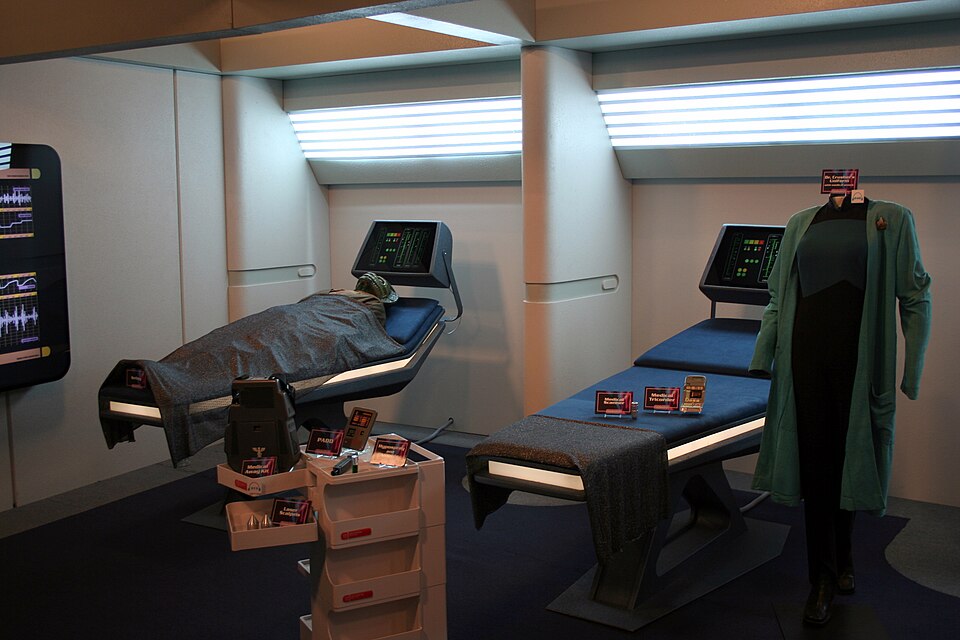
Last week, in a bizzare twist of events, the sitting U.S. president briefly posted—then deleted—an AI-generated video on Truth Social touting “medbed hospitals” and a national “medbed card system,” promising every American access to these miraculous healing pods.
The concept of a “medbed” originates in conspiracy and pseudoscience communities, especially QAnon. These futuristic pods are said to cure every illness, regenerate limbs, reverse aging, and heal any condition instantly.
Of course, medbeds don’t exist. But imagining them forces us to consider what their existence would mean: a wholesale rethinking of the hospital itself.
No operating rooms, imaging suites, ICUs, or emergency bays. Instead, perhaps pod-lined rooms, or neighborhood medbed stations. Waiting rooms might shrink—or disappear entirely—replaced by a simple queue for a single piece of technology.
Hospital of the Future Imagined
For decades, we’ve envisioned the hospital of the future. Star Trek introduced us to Sickbay (pictured) in 1966, complete with tricorders, biobeds, and dermal regenerators—non-invasive scanning and instant healing long before our technology could catch up.
Three years ago, much of the conversation centered on the metaverse. Proponents argued that hospitals would extend into virtual space, with patients appearing as avatars to meet clinicians in shared digital environments.
Some systems even experimented with the model. In Dubai, Medcare built a digital twin of its facility in the metaverse, allowing patients to explore services virtually before a visit. The Emirates Health Service launched MetaHealth, a platform designed to connect providers, patients, and medical knowledge in virtual space.
The metaverse hospital has not died. It is simply maturing—evolving into a set of practical applications: simulation and training for clinicians, digital twins for planning and design, and new modes of extending care beyond the walls of the physical facility.
Lesson of the Medbed Moment
That is the lesson of the medbed moment. Futuristic visions—whether they emerge from entertainment, hype cycles, or conspiracy theories—remind us of what people wish healthcare could deliver: speed, ease, universality, and equity.
The real challenge for healthcare leaders is not to chase miracle pods, but to extract the underlying aspirations and translate them into innovations that can actually reshape hospitals and care delivery.
The hospital of the future won’t be a single technology. It will be a system—physical, digital, and human—that blends the best of science with the timeless goals of medicine: healing, access, and trust.
P.S. Please do me a favor — if you liked this post and like this blog, please share it with others by sending them the link or posting it on your LinkedIn, X, or Facebook. Also, don’t forget to subscribe, so you’ll get emails when new content is posted. Thanks!
If you like this post, please share.

What’s my story? I’m a healthcare and senior living design knowledge expert who writes and speaks frequently about trends and issues affecting these two industries. I’m also a strategic marketing consultant and content creator, working with companies and organizations who want to improve the quality of healthcare and senior living through the design of the physical environment. You can reach me at [email protected].

